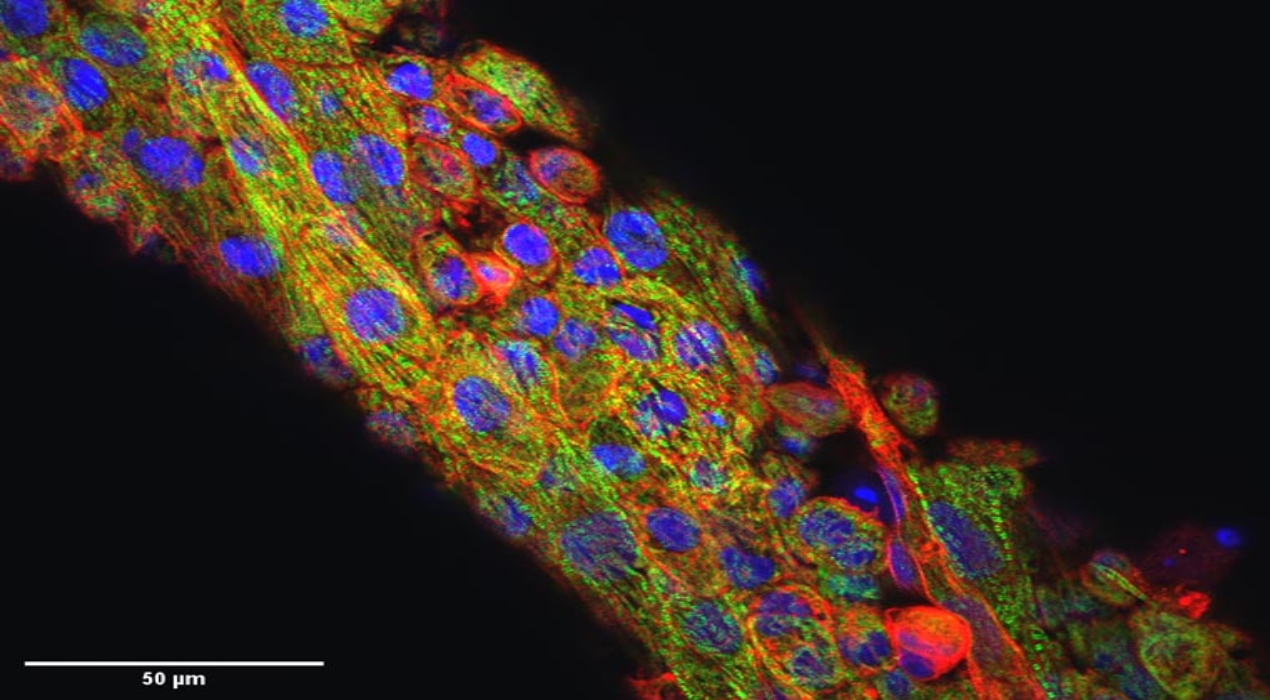
|
Getting your Trinity Audio player ready...
|
Attempting to capture a clear image of a puppy often results in a blur of fur, a challenge akin to that faced by researchers investigating the electrical conduction of heart muscle. The heart, a living organ, undergoes continuous contractions and relaxations as it carries out its vital pumping function. However, for researchers focused on the intricacies of electrical conduction, these rhythmic movements present a vexing obstacle, commonly referred to as a “motion artefact.”
To closely examine the dynamic fluorescent signals that signify the electrical activity of heart cells – akin to reading a stock ticker – researchers frequently resort to pharmaceutical agents that temporarily suspend the heart’s contractions during data collection. While this approach facilitates observing electrical functioning, it has a significant drawback. Namely, it impacts cardiac electrophysiology and restricts the ability to investigate the intricate interplay between electrical conduction, mechanical contraction, and cellular structure.
Researchers at Washington University in St. Louis have made strides in biomedical imaging by pioneering a computational approach to eliminate motion artefacts in images of expanding and contracting heart cells and tissues.
This groundbreaking algorithm was developed under the guidance of Nathaniel Huebsch, an assistant professor of biomedical engineering, and Guy Genin, the Harold and Kathleen Faught Professor of Mechanical Engineering at the McKelvey School of Engineering. The results of their research, showcased in a publication dated September 11th, have been featured in the Proceedings.
This novel computational approach is a game-changer in cardiac research and medical imaging. It simulates the action of drugs designed to halt the heartbeat while preserving the intricate structural integrity of individual cells and the contractile properties of cardiac tissues. Such a feat represents an advancement in understanding heart function at cellular and tissue levels.
This technique opens new research and diagnostics in cardiology by addressing the persistent challenge of motion artefacts in imaging studies. It promises to provide researchers and medical professionals with insights into cardiac dynamics, potentially leading to more precise diagnostic tools and therapeutic interventions for heart-related conditions.
The collaborative efforts exemplify the transformative potential of interdisciplinary research at the intersection of engineering and biomedical science.
Nathaniel Huebsch, whose research centres on the impact of mechanical cues on heart development and disease, explained the intricate relationship between electrical signals and mechanical contractions in the heart. He highlighted that an electrical signal traverses the cardiac tissue when the heart undergoes its rhythmic contractions, initiating the essential mechanical squeezing action. It’s a harmonious interplay vital for maintaining the heart’s functionality.
However, decoupling the electric pulse from mechanical squeezing can lead to life-threatening arrhythmias. Huebsch’s research group, driven by an interest in understanding how inherited cardiomyopathies develop, has long sought an effective means to directly and non-invasively explore the electro-mechanical coupling within cardiomyocytes. This goal has remained elusive until now.
Their groundbreaking solution involves an innovative algorithm designed to replicate the effects of blebbistatin, a drug known for inhibiting motion in heart muscle. However, the drawback with blebbistatin lies in its potential to adversely affect the underlying cellular structure.
This novel approach, aptly named “virtual blebbistatin,” combines two distinct algorithms. The first algorithm has proven successful in estimating displacements for cardiac mapping.
In contrast, the second utilises the data generated by the first to map evolving signals back to a stabilised image of the cardiac tissue. This method empowers researchers to directly observe and monitor the intricate coupling of calcium waves, membrane voltage, and mechanical contractions on a beat-by-beat basis within heart tissue models.
This revolutionary tool promises invaluable insights into the mechanisms underlying various heart diseases, offering a ray of hope for more effective diagnosis and treatment strategies. The ability to comprehend the interplay between electrical and mechanical aspects of cardiac function represents a significant leap forward in combating heart-related ailments.
















